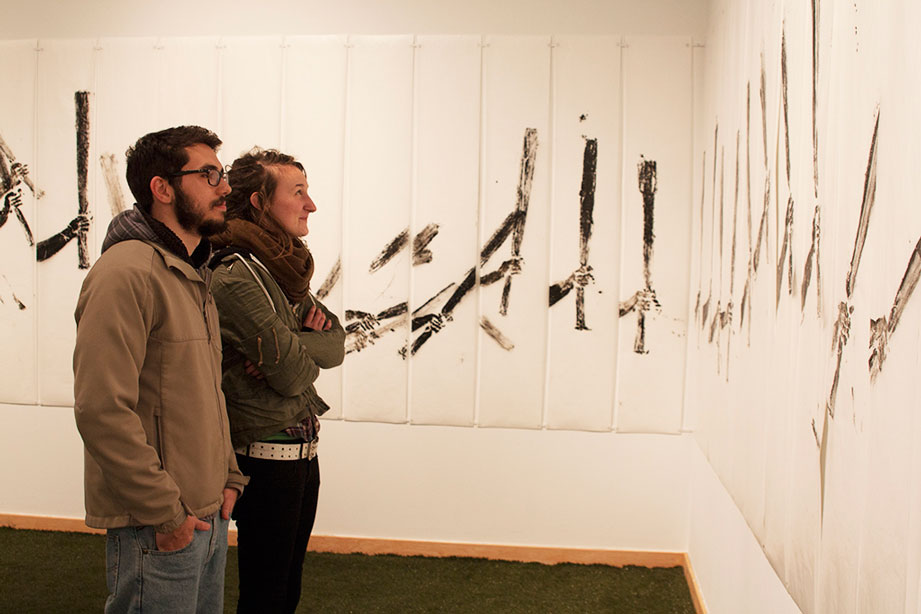The 2014 Department of Art Faculty Biennial Exhibition opened Friday with art featured in both the Turchin Center for the Visual Arts and the Catherine J. Smith Gallery in the Schaefer Center for the Performing Arts.

The show includes art from multidisciplinary faculty members and showcases their most recent creative and scholarly research in the area of art
“A lot of times, exhibitions happen away from home, but here’s a way for students to come see what’s recent in people’s creative endeavors,” said Jody Servon, director of the Catherine J. Smith Gallery.
She considers the exhibition an opportunity for students to start a dialogue with their professors and understand how they deal with the same obstacles that students face in their classes, she said.
“When you can see how people are solving issues within their own work, you can ask them questions and even challenge the ways in which they have resolved things,” Servon said. “It’s a conversation starter.”
The exhibition was open to applications from all subdivisions within the Department of Art, including those in art history, education and restoration. The key is simply to connect the work they produce to the subjects that they teach.
“In any collegiate program, you want to know who you’re learning from,” said Ben Wesemann, assistant director of the Catherine J. Smith Gallery and graduate of Appalachian’s art program. “You want to know that they have something to teach you.”
Wesemann said this collection is the most diverse and exciting he has seen in the past eight years he’s served as assistant director for the gallery.
“We never know how people will receive our work, but it is important to put our work out there,” Karen Cleveland, Department of Art lecturer, said. “Showing work to the student body also models for the students what it means to put your heart into what you do, be vulnerable and stand behind your work.”
Cleveland has three pieces featured in the collection and teaches an array of classes, from Drawing One through Three to Advanced Contemporary Studio Practice to Cultivating Creativity.
One of her works, visible upon entering the Turchin, is “That Which Comes from the Heart,” an installation of 250 suspended ceramic pieces configured in a branch-like shape.
Cleveland grew up on the Blackfoot Indian Reservation in Montana, immersed in local lore, traditions and ceremony. She said this piece is reminiscent of Montana land features and traditional Blackfoot philosophy.
“The work’s suspended fragments reflect the elder’s stories of creation and connection, while the spaces leave room for pause and let the viewer fill in the gaps, bringing tradition lore into a contemporary context,” Cleveland said. “Rooted in tradition, the viewer can complete the story, bring it into the present and reinvigorate old narratives with new life.”
Another of her pieces, “Trees,” is a sound installation based on brain wave activity. She uses a neurofeedback device that reads Alpha, Beta and Theta brainwaves, records their fluctuation and sends the information to a computer. She then transfers the analog information into digital form and the pattern created by the fluctuation of waves becomes a score for a “song.”
“I use sounds I recorded of trees creaking in the wind as notes,” Cleveland said. “In other words, when certain waves fire or fluctuate, the score triggers a new note.”
She recorded the brain wave pattern used in the piece while meditating in the woods.
The collection is on display until March 22. For more information, visit tcva.org.
Story by Lovey Cooper, Senior A&E Reporter
Photo: Rachel Krauza, Staff Photographer
